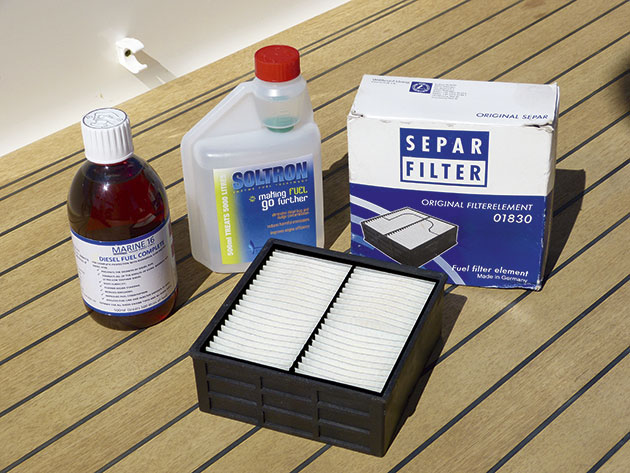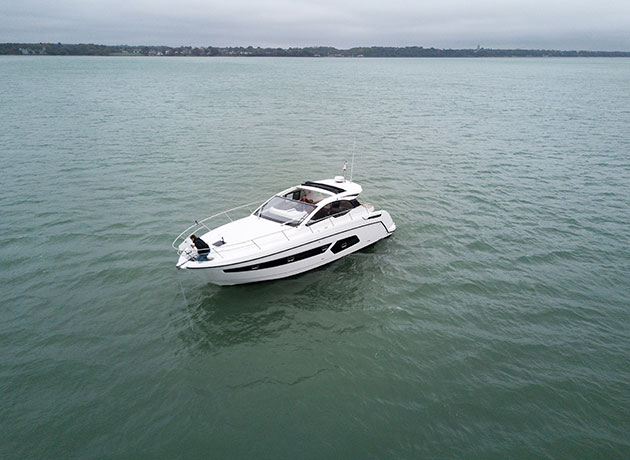In our latest boat handling video, Jon Mendez shows how best to trim the boat when you head to windward
Being able to comfortably head to windward is what good planing motor boats are all about.
The ability to travel at 16 knots or more into the wind is one of the great party tricks our sailing counterparts envy. Choosing the right moment weather wise is the key – more wind means it’s getting lumpier for those aboard – and the style and design of your hull will play a vital role in how much wind you can cope with.
In a boat of less than 40ft (12.2m), a wind strength of up to F4 is perfect passagemaking weather. If you have a tidal element in your cruising area, any tidal movement against the wind will amplify the waves and can make a passage that would be relatively pleasant in non-tidal areas a real challenge. Wind and tide together generally makes it no worse than a non-tidal area.
Planing boats are at their most efficient either when cruising slower than their displacement hull speed, roughly 5-8 knots depending on length, or when fully planing at 16-18 knots or more. Speeds between these two ranges (8-15 knots) tend to use a lot of fuel for a relatively small gain in speed, but if trimmed correctly, can make for a more comfortable passage in lumpy weather. Article continues below…

VIDEO: How to… Prevent diesel bug
No owner wants plans to be cut short by diesel bug, Jon Mendez's video goes through how to prevent dreaded

VIDEO: How to… Polish your boat
MBY's definitive guide to all those essential tasks you need to know how to do but were too afraid to

VIDEO: How to – Hold your boat steady
MBY’s definitive guide to boat handling. In this episode we show you how to hold your boat steady
So, having chosen your passage timing and the weather that comes with it, how do you get the best out of your boat when travelling upwind? First, you need to get the boat up to speed. Shaftdrives and pods don’t usually have any means of trimming the drives themselves so you’ll need to use the trim tabs/blades to make any adjustments.
Sterndrives and outboards do have adjustable trim angles so when heading into the wind, trim the outdrive legs all the way into the hull, usually about -5. Then, apply enough power to get the boat past its ‘hump’ speed at which point it will start to plane on the surface of the water, rather like skimming a stone.
Some older, heavier or underpowered craft will also need an application of trim tabs to assist with getting the boat on to the plane. By adjusting the trim tabs down, the water pressure acting against the lowered tabs lifts the stern up and pushes the bow down. This can help the boat to plane earlier, or stay on the plane at slower cruising speeds.
Once the boat is on the plane, you can then use the tabs to adjust the running attitude of the boat to suit the conditions (see opposite for details). This can make a significant difference to both comfort and speed. You can also use them to dial out any leaning caused by uneven weight distribution or a stiff crosswind.






















